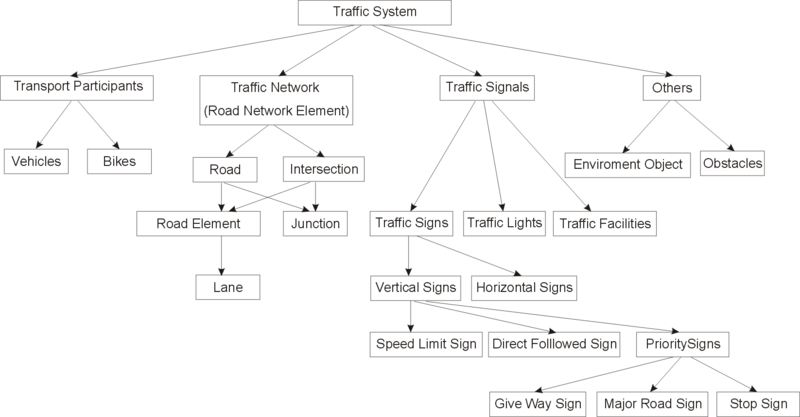Brief introduction
Project Specification
- Multi-agent Systems;
- Logical Analysis of Natural Language;
- Specification Languages Based on Natural Language;
- Knowledge Representation;
- Inference Machines;
- Non-monotonic Reasoning and Belief Revision;
- Process Management, Control and Coordination;
- Process Simulation and Prediction.
- Process control;
- Knowledge management;
- Communication and infrastructure.
- implicit (which leads to an 'explosion' of knowledge and the paradox of omniscience);
- explicit (which deprives an agent of any inferential capabilities);
- inferable (of a realistic agent with some inferential capabilities, who, however, is not logically omniscient).
- powerful declarative programming language;
- exact transparent semantics based on TIL;
- great expressive power adequate for natural language analysis;
- compliance with FIPA standards for content language;
- appropriate for multi-agent systems implementation.
Logic & MAS: components
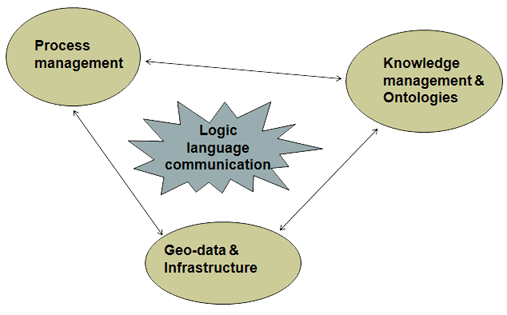
Method of analysis; example

Inferable Knowledge Theory
defined as the least fixed-point of the function Infa containing an agent's explicit knowledge relativized to agent's inferential abilities

We compute the limit of the stock of knowledge an agent is able to infer from its explicit knowledge base.
The logic is proposed as the logic that accommodates the philosophical desiderata that should be met in a multi-agent world
Applications
AgentStudio
AgentStudio is a software tool for MAS development and simulation. The first part of this tool is represented by an
AgentStudio Designer that is dedicated for specification purposes. The second part covers a
simulation application designed purely for traffic
simulations now. It is called AgentStudio Simulator.
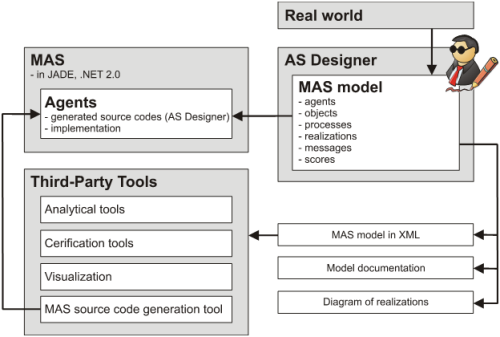
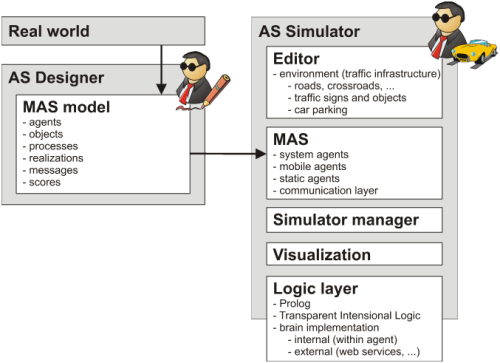
The AgentStudio Designer has been developed for purposes of process flows specifications, modeling and their transformation. It provides entire processes specification thanks to Agent Behavior Diagrams (ABD). ABD covers standard technique of UML Activity Diagrams extended by new structural elements, executive elements and rules [6]. This tool has several outputs including documentation and graphic representation of internal agentsí behaviors (Traffic MAS architecture chapter). An implementation of modeled agents based on the semi-automatic source codes generation will be the prime result of our research because it is not complete yet. These source codes link automatic generated skeletons (classes, methods, objects, architecture, etc.) and particular implementation of atomic activities. Of course, more complex codes have to be completed by programmers and adapted for a given MAS framework (e.g. JADE).
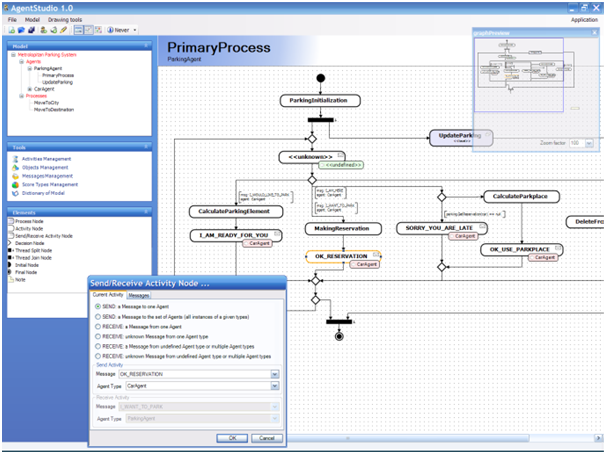
Traffic simulations try to reflect real situations taking place on roads. Nowadays, AgentStudio Simulator allows us to design and edit simplified infrastructure to test agentsí behaviors. In the future, it will also enable to import real GIS data. These are important situations which we focused on: Cars overtake each other and they will recognize traffic obstacles, they safety pass through crossroads, they keep safety distance from other agents (cars), they keep basic rules defined in Highway Code. Previously mentioned situations make basic elements within agent behavior design process. Particular situation is solved during agentsí life with respect to its ability to make a decision. Finally, MAS development and simulation can be divided into steps mentioned below.
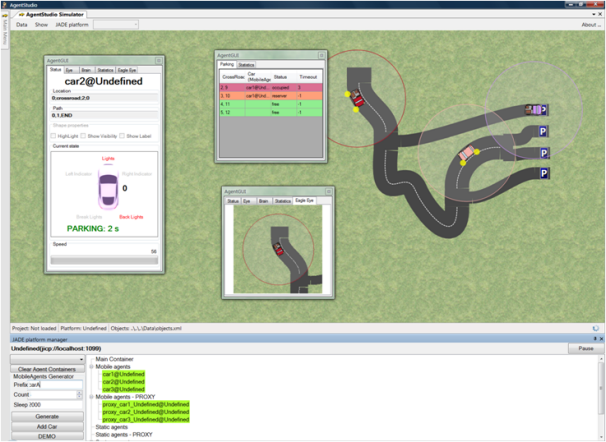
Agent simulation based on real data
Agent environment is now implemented on the real road network which help as verify behavior of intelligent mobile agents in more realist manner. The overall architecture of the simulation environment and the creation process is depicted at figure 1. Information about real world (roads, crossroads etc.) is stored as GIS data (Shapefiles or geographic database), subsequently transformed into internal object representation using programming language like Java or .Net. This object representation serves as virtual world for mobile agents (vehicles) moving through the road network. Representation of road network was inspired by the topological lane model presented in
project NextMAP. The project NextMAP is resarch project to define, prototype, and evaluate the content of digital map databases required for future in-vehicle ITS aplication.
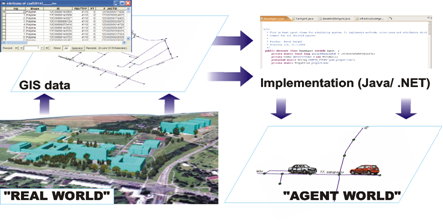
The other benefit of connection GIS applications and simulator is visualization of traffic simulation. The process of visualization perform a special visualization agent which can be implemented to the any GIS application. In the instance, visualization agent is running as plug-in of OpenJUMP. The connection of GIS application with simulator is build on ability of visualization agent to communicate with the world agent. The world agent holds states and positions of all objects of traffic infrastructure and information about positions of mobile agents. The visualization agent periodically request information from world agent about mobile agents position and transform them to the geographic coordinates. The coordinates of mobile agents than can be easily visualized or stored at the GIS. For example, GIS visualization can placed the traffic simulation on digital terrain model or aerial photography as is depicted at figure below.
TIL Script more info
TIL-Script is a new powerful, declarative programming language. The language is based on Pavel Tichy's Transparent Intensional Logic (TIL for short). From the formal point of view, TIL is a partial, hyper-intensional lambda calculus. Thus TIL-Script combines the features of classical lambda calculi as known from Church's or Barendregt's work, enriched with partiality and hyper-intensionality. By the latter we mean the fact, that the meaning of our lambda terms is not a denoted function, but the respective procedure (a general algorithm) the output of which is the denoted function.
We also develop tools for TIL-Script language like TIL-Studio for analysing the TIL-Script sentences.
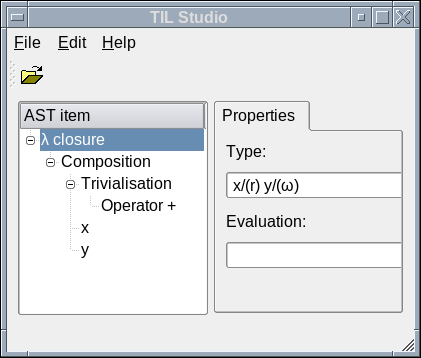
Onthology building
We are also building massive onthology for our use-case, the traffic system. The basic level is demonstrated at the figure below.
